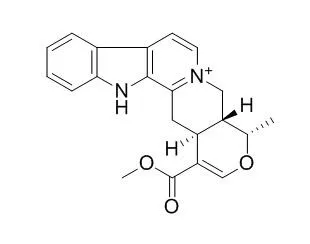| Environ Sci Process Impacts. 2015 May 5. |
| Analysis of serpentine polymorphs in investigations of natural occurrences of asbestos.[Pubmed: 25942071] |
This work investigates potential analytical variability in environmental investigations of natural occurrences of asbestos (NOA) due to intergrown Serpentine minerals.
METHODS AND RESULTS:
Franciscan complex and serpentinite rock samples were obtained from likely NOA sites in coastal Northern California with geographic information system (GIS) maps, then analyzed using polarized light microscopy (PLM), transmission electron microscopy with energy-dispersive X-ray analysis and selected area electron diffraction (TEM/SAED/EDS), and environmental scanning electron microscopy with EDS (ESEM/EDS). Non-asbestos Serpentine fibers were superficially similar to chrysotile but were differentiated quickly using TEM morphology criteria and reference SAED overlays. 94 NOA fibers were classified as asbestiform chrysotile (62%), polygonal Serpentine (34%), lizardite scrolls (2%), and lizardite laths (2%). Chrysotile fibril widths (mean = 42 nm) were significantly different from those of polygonal Serpentine and lizardite laths (167 and 505 nm, respectively), but not lizardite scrolls (37 nm). |
| J Nanosci Nanotechnol. 2014 Sep;14(9):6915-22. |
| A facile route to preparation of high purity nanoporous silica from acid-leached residue of serpentine.[Pubmed: 25924349] |
As the current cost of mineral carbonation is too high for an economically viable industrial process, it is desirable to produce value-added products from CO2 mineralization process.
METHODS AND RESULTS:
In this work, a facile and cost-effective process was developed for the production of high purity SiO2 from acid-leached Serpentine residue. |
| J Toxicol Environ Health B Crit Rev. 2015;18(1):1-42. |
| Methodologies for determining the sources, characteristics, distribution, and abundance of asbestiform and nonasbestiform amphibole and serpentine in ambient air and water.[Pubmed: 25825806] |
METHODS AND RESULTS:
Anthropogenic and nonanthropogenic (erosion) processes contribute to the continuing presence of asbestos and nonasbestos elongated mineral particles (EMP) of amphibole and Serpentine in air and water of urban, rural, and remote environments. The anthropogenic processes include disturbance and deterioration of asbestos-containing materials, mining of amphibole- and Serpentine-bearing rock, and disturbance of soils containing amphibole and Serpentine.
CONCLUSIONS:
Atmospheric dispersal processes can transport EMP on a global scale. |






 Cell. 2018 Jan 11;172(1-2):249-261.e12. doi: 10.1016/j.cell.2017.12.019.IF=36.216(2019)
Cell. 2018 Jan 11;172(1-2):249-261.e12. doi: 10.1016/j.cell.2017.12.019.IF=36.216(2019) Cell Metab. 2020 Mar 3;31(3):534-548.e5. doi: 10.1016/j.cmet.2020.01.002.IF=22.415(2019)
Cell Metab. 2020 Mar 3;31(3):534-548.e5. doi: 10.1016/j.cmet.2020.01.002.IF=22.415(2019) Mol Cell. 2017 Nov 16;68(4):673-685.e6. doi: 10.1016/j.molcel.2017.10.022.IF=14.548(2019)
Mol Cell. 2017 Nov 16;68(4):673-685.e6. doi: 10.1016/j.molcel.2017.10.022.IF=14.548(2019)